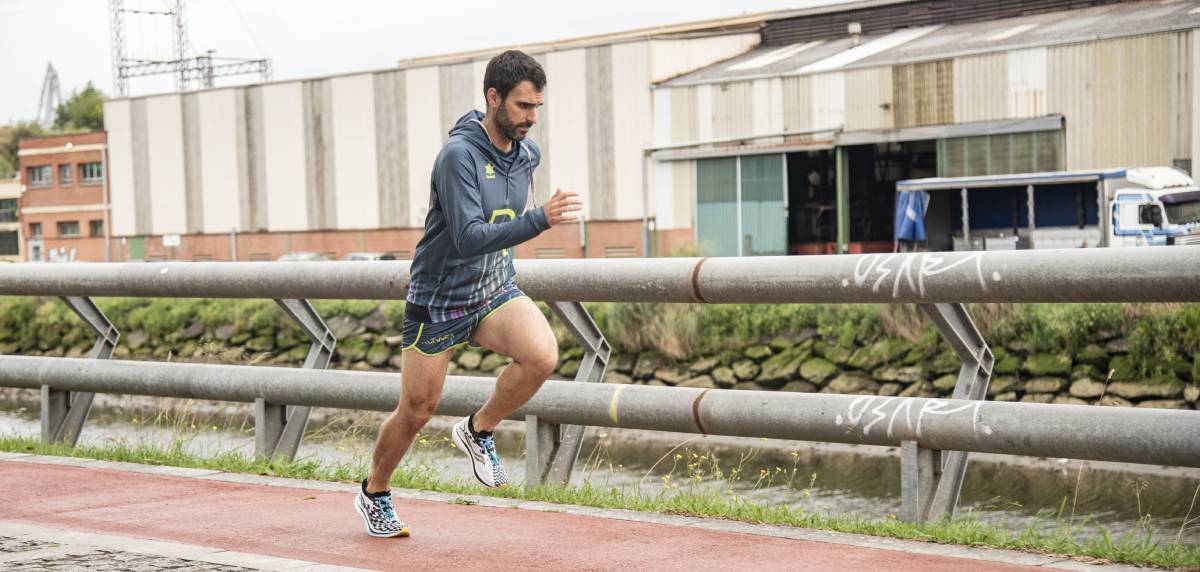The marathon is a highly demanding event, both physically and psychologically, which requires months or years of preparation to be performed with guarantees. However, sometimes, due to a lack of experience or overconfidence, we throw away all the work of long and intense training sessions when we choose an inadequate pace at the beginning of the race and we run into the dreaded "wall".
Normally, from kilometer 25-30 many runners hit the so-called "wall". The dreaded wall is characterized by an inability to maintain the pace in the face of increasing fatigue, even by lowering the intensity of the race.
If you are one of those who have worn a race bib in a popular race, you will know what we are talking about. That "runner's euphoria" at the beginning of the race, that of letting ourselves be carried away by the pace of other runners at the start of the race, can be detrimental in the second half of the challenge. Being overly optimistic, or not having a cool head, can take its toll.

Normally, from kilometer 25-30, many runners hit the so-called "wall". The dreaded wall is characterized by an inability to maintain pace in the face of increasing fatigue, even when running at a lower intensity. This is due to multiple factors, including: hyperthermia that reduces energy efficiency, depletion of glycogen stores (glycogen depletion), muscle fatigue, the onset of significant dehydration and so on.
At what kilometer of the race does the "wall" appear and how can it be prevented?

It is difficult to establish when this moment will appear, but it usually occurs between 2 hours and 2 hours and 30 minutes into the race. Although proper nutrition and hydration before and during the race will minimize the chances of suffering from this phenomenon or at least minimize it, starting at a pace above our possibilities will cause us to suffer from it. Hence the importance of correctly establishing our strategy and competitive pace; one of the main objectives of endurance training is to use fats as an energy substrate at the highest possible intensity, avoiding the depletion of glycogen deposits.
It is necessary to reemphasize that what we suffer when we hit the wall has begun to be forged kilometers ago and is the result of poor decision making, so it is vital to be aware of our possibilities and stick to our plan.
In spite of everything, and in the hypothetical case that we correctly comply with all the premises during the race, it is quite likely that in the second half of the race our running pace will drop noticeably despite the fact that our perception of fatigue and heart rate is sky-high.

This is relatively normal, because no matter how good a feeding strategy we maintain, our body is not able to assimilate as many calories as those expended during the race. Therefore, we will always be in negative in this sense.
Running beyond your means, negative consequences on performance
On the other hand, in many occasions popular runners tend to give excessive weight to the "long run" within their training program and relate a need for a higher volume of kilometers in their programs so that the wall does not come. Following the training plan correctly, making sure to accumulate a minimum volume of work during the different sessions, and not only in one, will be the best guarantee for the achievement of our goal.
Running every Sunday 34 kilometers will not free you from suffering the dreaded wall, if you run beyond your possibilities.
This is far from reality, despite the importance of accumulating kilometers during the training program, a "miracle" session will not prevent this physiological fact from happening. In other words, running 34 kilometers every Sunday will not save you from suffering the dreaded wall if you run beyond your means.
To summarize, in order to delay or reduce the incidence of the wall, it is necessary to set a race pace appropriate to our possibilities and comply with it during the race, assuming that in the vast majority of popular runners the performance in the second part of the race will be lower. Therefore, this will have to have an implication in your strategy.
Read more news about: Running Training






















